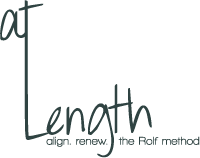2. Be aware of your posture! Part Two
As we talked about last time, correct posture is vital to your mental and physical wellbeing. Standing properly is very important, but if you spend more time surfing the web or watching TV than you do in motion, the way you sit has a greater influence on your posture than the way you stand does. Over time, the connective tissue in your body adapts to and supports your slouch, creating a new, unhealthy posture. And that’s not all! And that’s not all! Studies have shown that prolonged sitting is linked to organ damage (heart, pancreas and colon), muscle and bone degeneration, and even brain function. So when you know you’re going to be sitting for an extended period of time, keep the following tips in mind.
Sit up straight!
An important aspect of sitting properly is sitting on your “sitz bones.” These are your ishial tuberosities, the two bony protrusions on the bottom of your pelvis. These bones are meant to support the entire weight of your torso. The underside of your thighs and your tailbone are not!
Sit on a hard surface (hard enough so you can feel your bones against it) with your feet flat on the floor and your back straight. Slowly rock forward, backward, and perhaps from side to side until you can feel two bony spots in your buttocks. Balance the weight of your torso evenly on these two bones. Then straighten your spine so your shoulders are lined up with your hips. You may need to press your shoulders down and back, lifting your chest. Be sure your lower belly is not curving forward — press it towards your spine to straighten your lower back. Straighten your neck so it is aligned with your straight spine, and be sure your head is solidly on top of it and your ear is lined up with your shoulder.
Now try out this position: lean forward, backward, and sideways from the hip, keeping your back straight. This is how you should move in a seated position. Notice that you do not have to support your back in any way to maintain this position, if you are truly balanced above your sitz bones.
 Once you become accustomed to sitting on your sitz bones with a straight back, you will have more energy and more breath to work and play! It will soon become MORE comfortable to sit up straight than to slouch, I promise!
Once you become accustomed to sitting on your sitz bones with a straight back, you will have more energy and more breath to work and play! It will soon become MORE comfortable to sit up straight than to slouch, I promise!
TIP: When trying to change your postural habits, put a sticky note on your computer or above the copy machine or counter to remind you to kick your old habits and straighten up!
Once you begin to stand and sit up straight, you will be engaging muscles that you are unaccustomed to using in this way. Assuming that you don’t have any soft tissue compensations (from old injuries, surgeries, repetitive movements or a lifetime of bad postural habits) your body will soon adjust, and it will become more and more natural to stand and sit up straight!
However, if your body is having difficulty adjusting to a balanced posture, you may need to lengthen your muscles with slow stretching, or strengthen your back, shoulders and core muscles with exercise. If the problem persists, you may need some deep tissue massage to relieve accumulated muscle tension, or connective tissue work to release fascial restrictions. To learn more about this, see my website tab about the Rolf “method”.
Next time: “Driving yourself crazy?”

